LabGuy's World: Chester Newell - Part 3
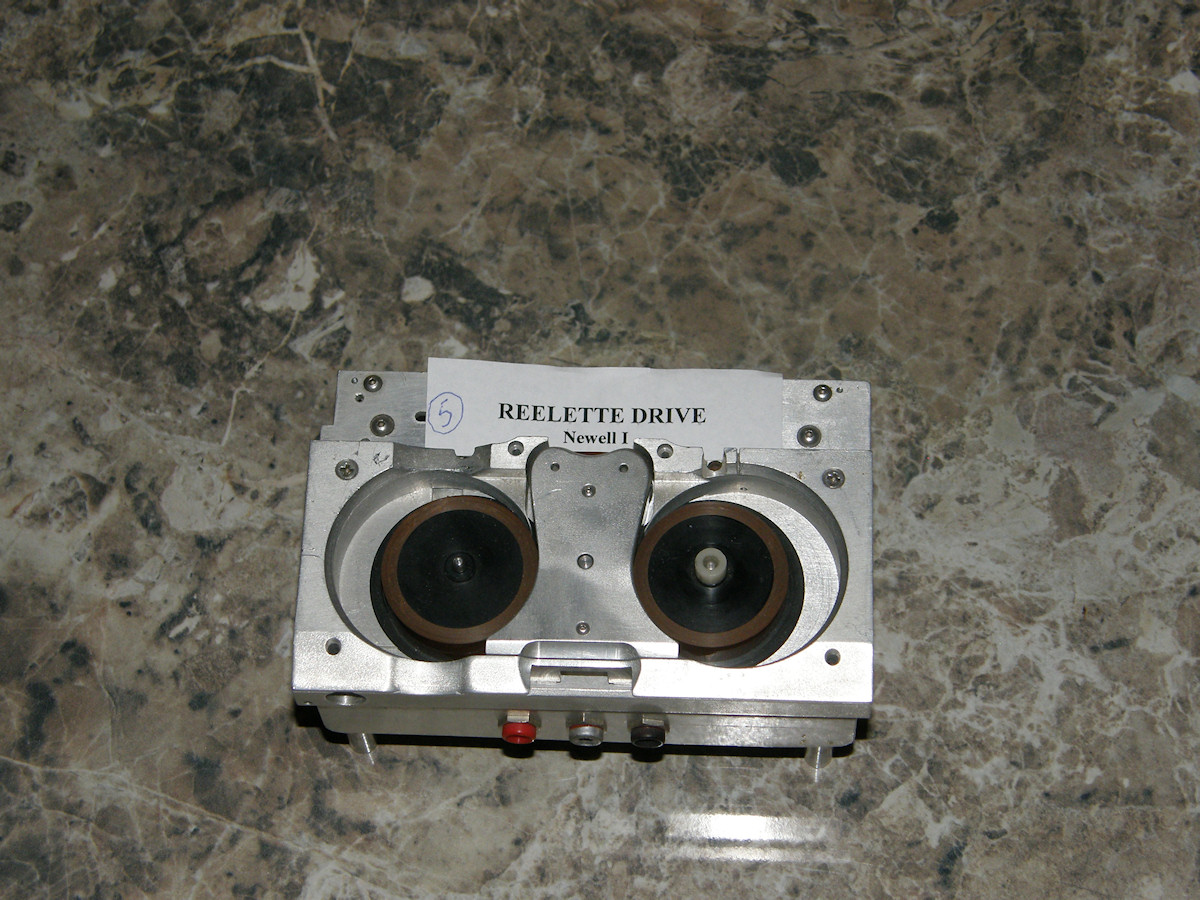
Newell 1, Reelette Drive prototype. 1967? - 20150526 On May 23, 2015, I had the pleasure of meeting Joyce Newell in person. Joyce is Chester Newell's widow. She graciously invited me to meet with her and transfer the last remnants of Chester's work to my collection for preservation. This is a list of the most important artifacts I have identified and classified so far. There was also a great haul of documentation. That will be posted at a later time. Stay tuned! 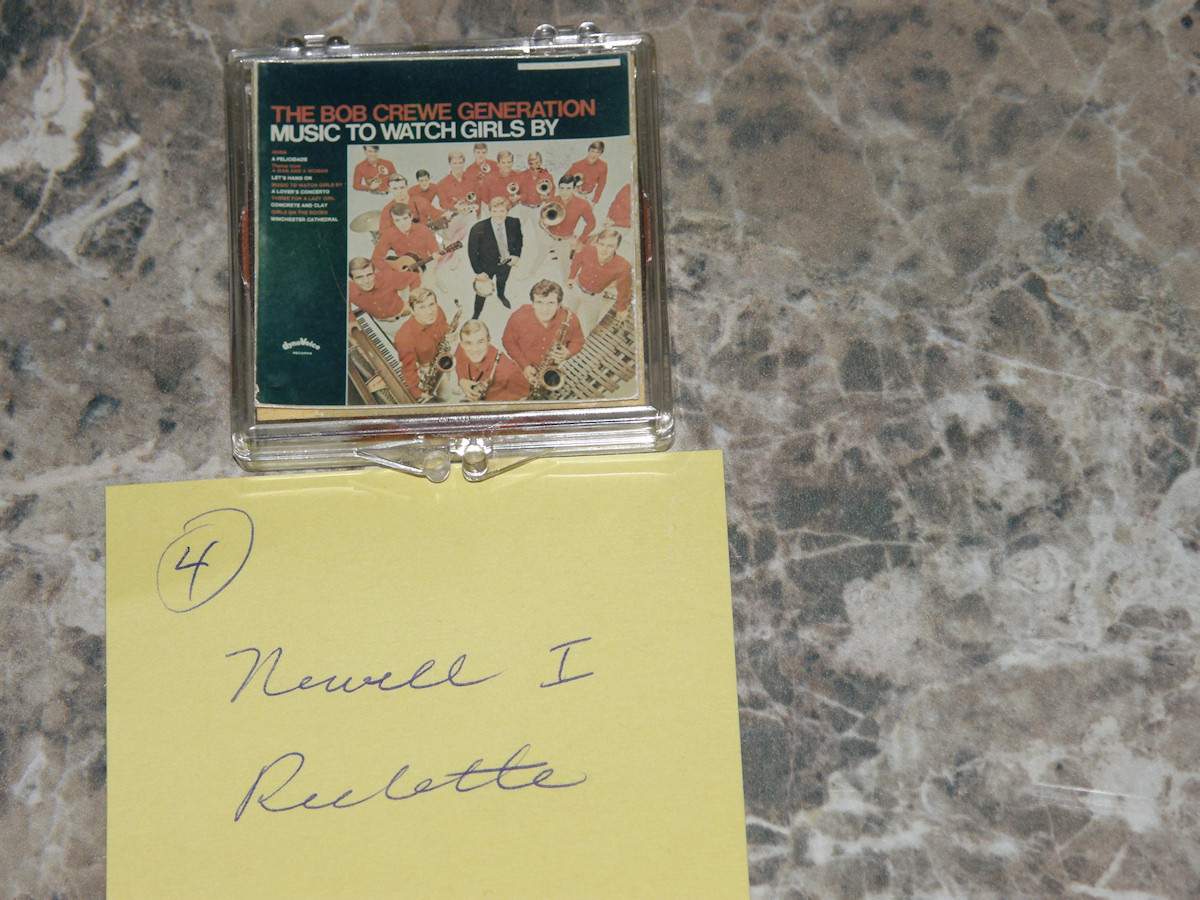
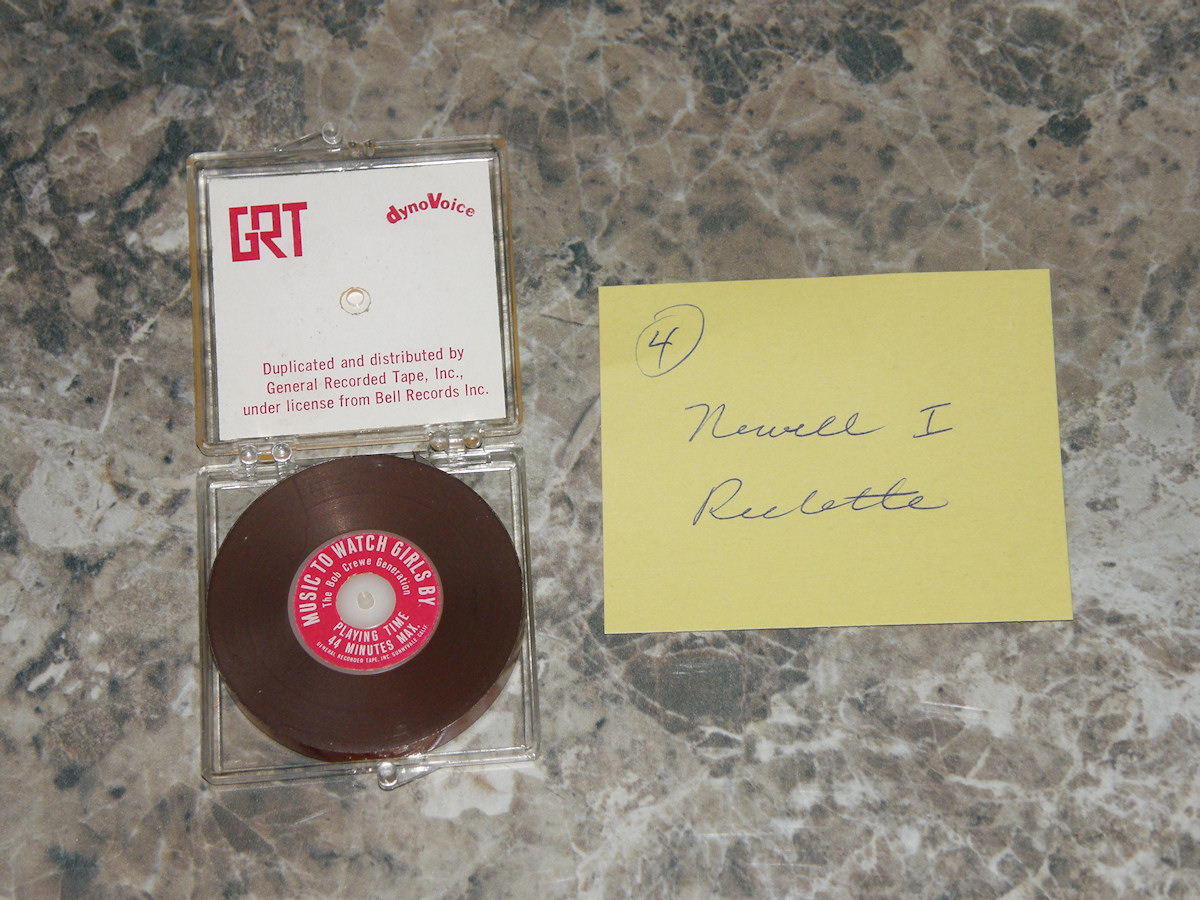
Newell 1, Reelette tape. 1967? - 20150526 Above we see Chester's answer to the compact cassett. It is called a reelette. It is only 1-1/4 inches in diameter and the tape is a quarter inch wide. It is wound to the spindle so tightly, it is actually one solid mass. It was claimed you could drop on the floor and it would not unwind. It would be fun to try and play this. but, that would violate Labguy's rule of "Do No Harm". So, we will enjoy it is it was found. I believe that this is the only one of these. It is quite likely a working mock up. Or it was a production item for an extremely short time. I don't know. Do you? [Drop me a line and let us all know!] 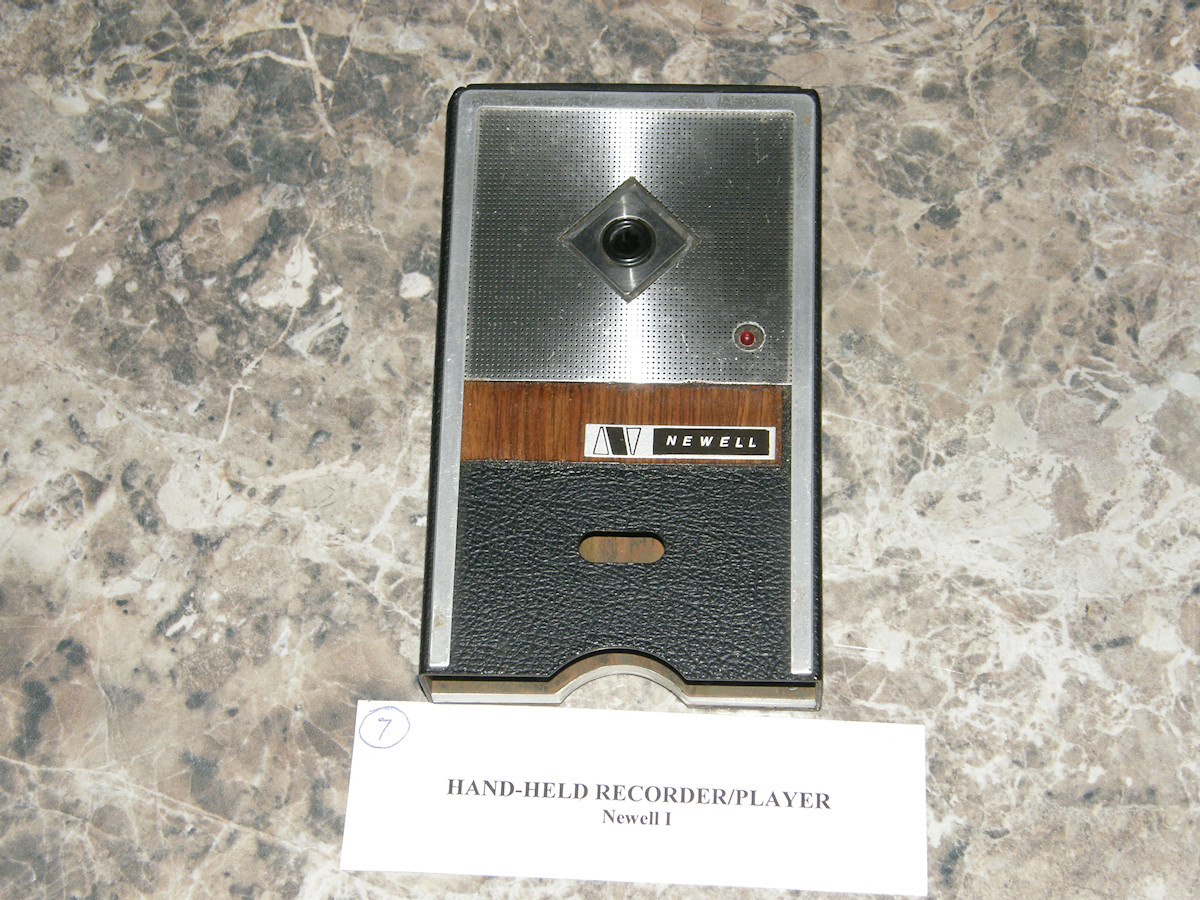
Newell 1, portable reelette tape recorder prototype. 1966? 67? - 20150526 I can not tell if this was operational or just a mock up. It is pretty heavy for a mock up. I can see a recording head through the opening in the end. None of the media that came with this set of objects seems to interface to this drive. A pity. 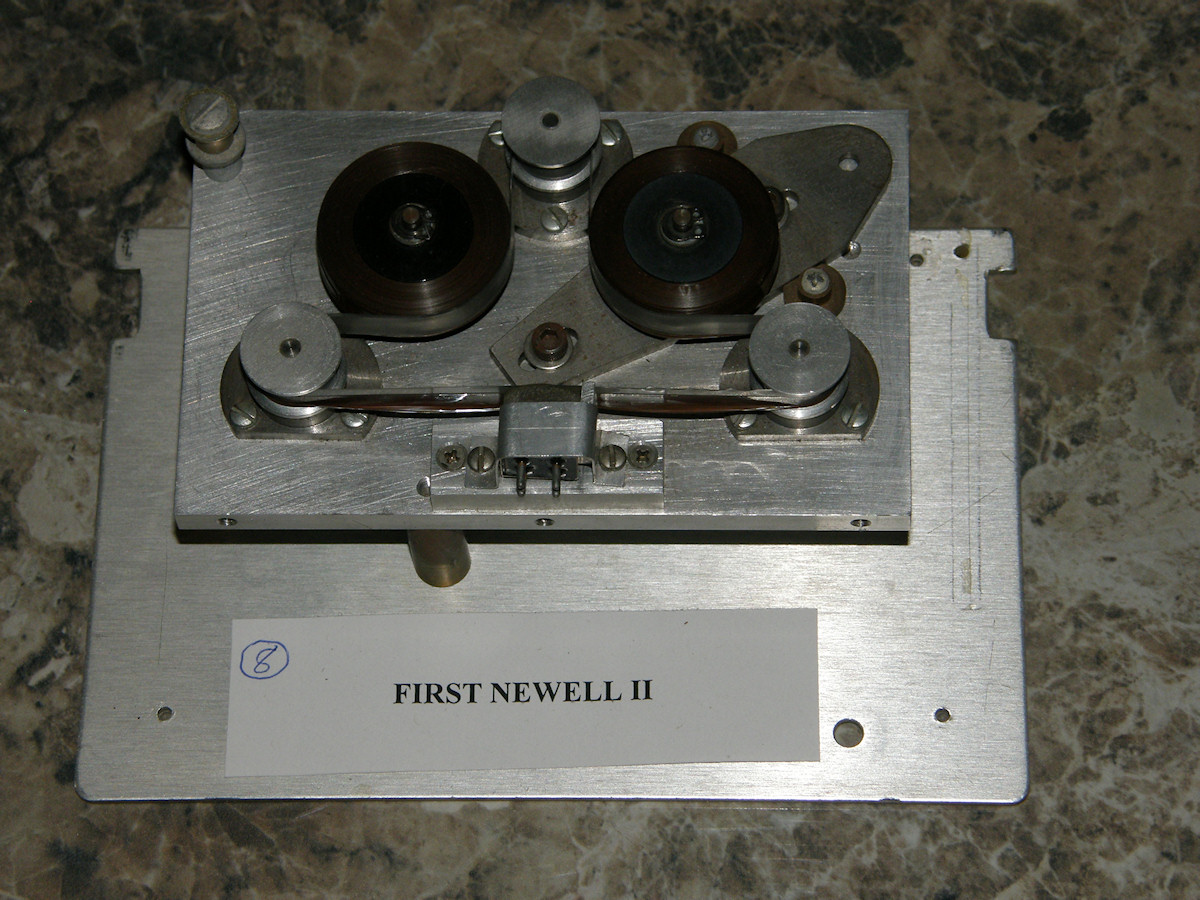
Newell 2, computer backup tape prototype. 1970s? - 20150526 This little guy is a bit different than the earlier machines I've shown so far. This one has a mylar tensioning band running in parallel with the tape. Ever use a tape backup cartridge on your computer? Well, it started right there. More to follow. 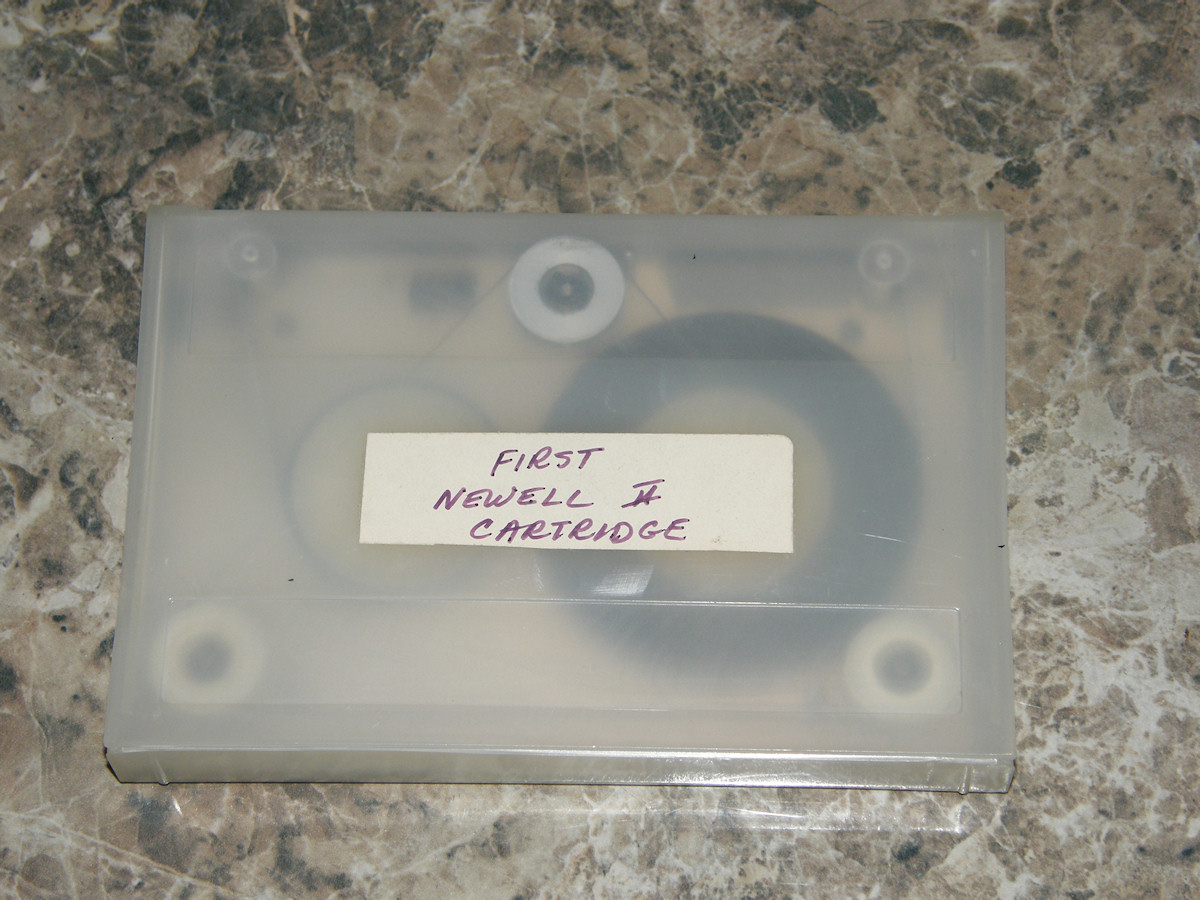
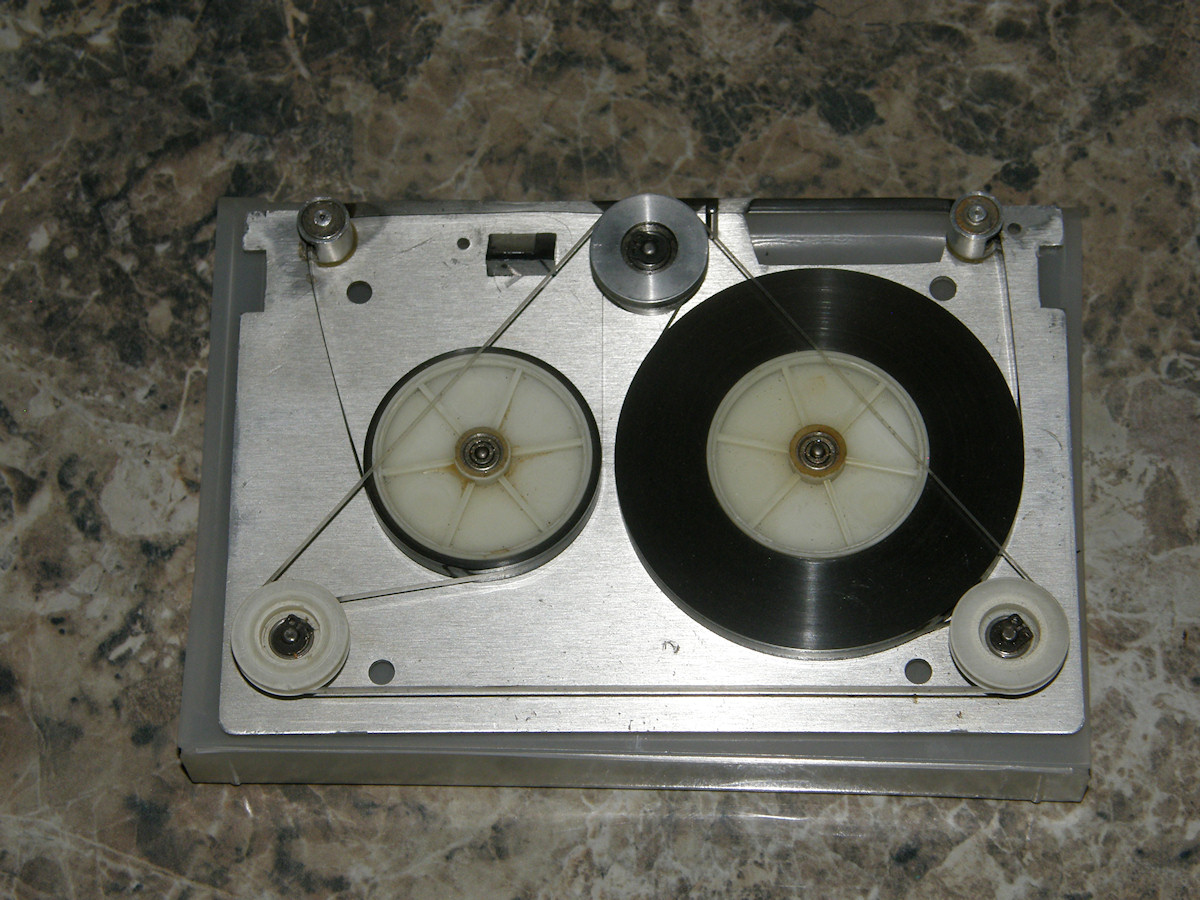
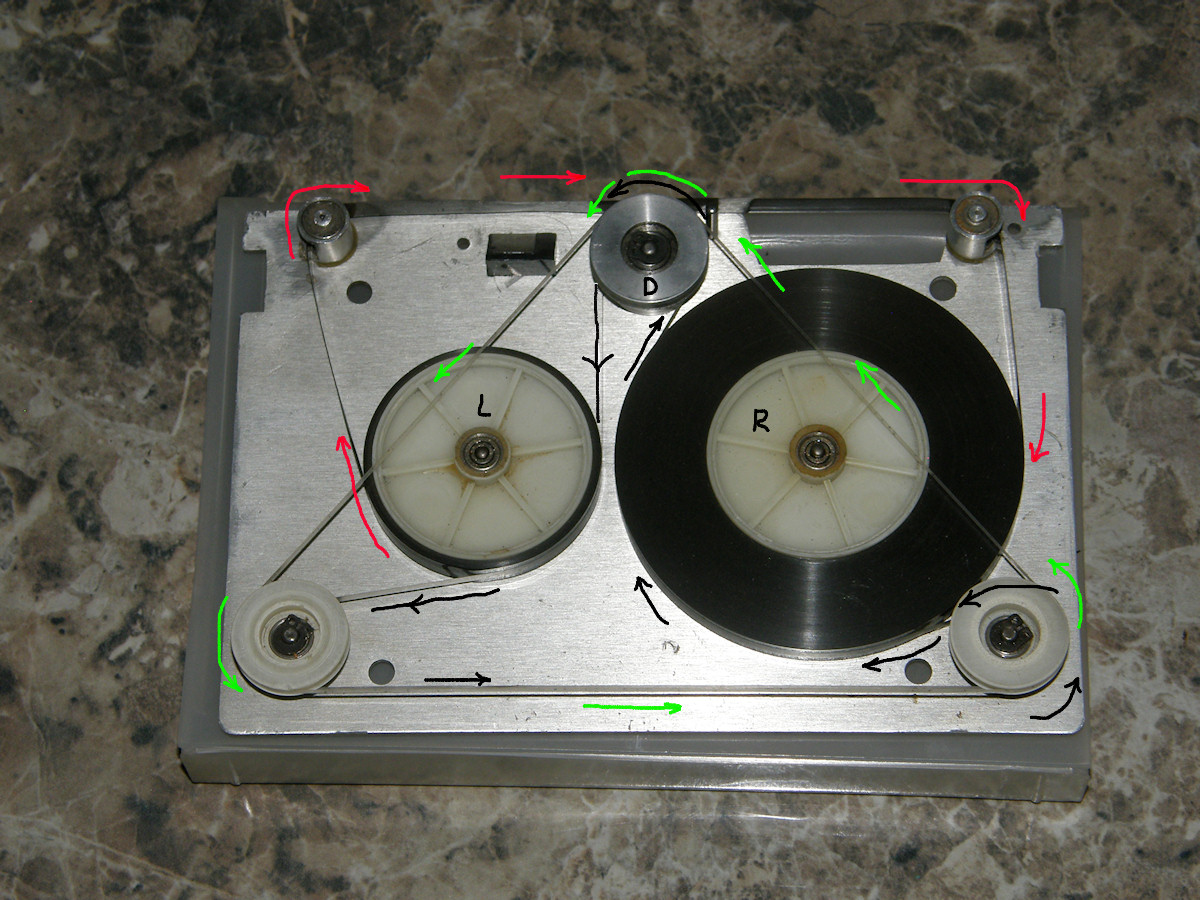
Newell 2, computer backup tape prototype. 1970s? - 20150526 Now this unit is clearly identified the first Newll II data cartridge prototype. It looks like the mature products that existed for decades through the late 80s and well into the 21st century. Again we see the tension bands that made the Newell II process work. These are made of mylar. In the final production units, synthetic rubber bands were used. This prototype cartidge has two mylar belts. In the flow diagram, three sets of arrows point out the tape and two mylar drive belts. Still as tight as the day they were installed in the late 70s or early 80s. The green arrows trace the path of the top skinny belt which runs around the outside of the three pulleys. The black arrows trace out the path of the quarter inch mylar belt that drives the tape packs at their rims. The red arrows trace the tape path from the left reel (L) to the right reel (R). The whole system was designed to cleverly control the tape tension at all times. The magnetic tape reel packs are driven at constant rim velocity by the belt. Notice how perfect the tape pack is. This is the result of the air being squeezed out from between the layers of tape. 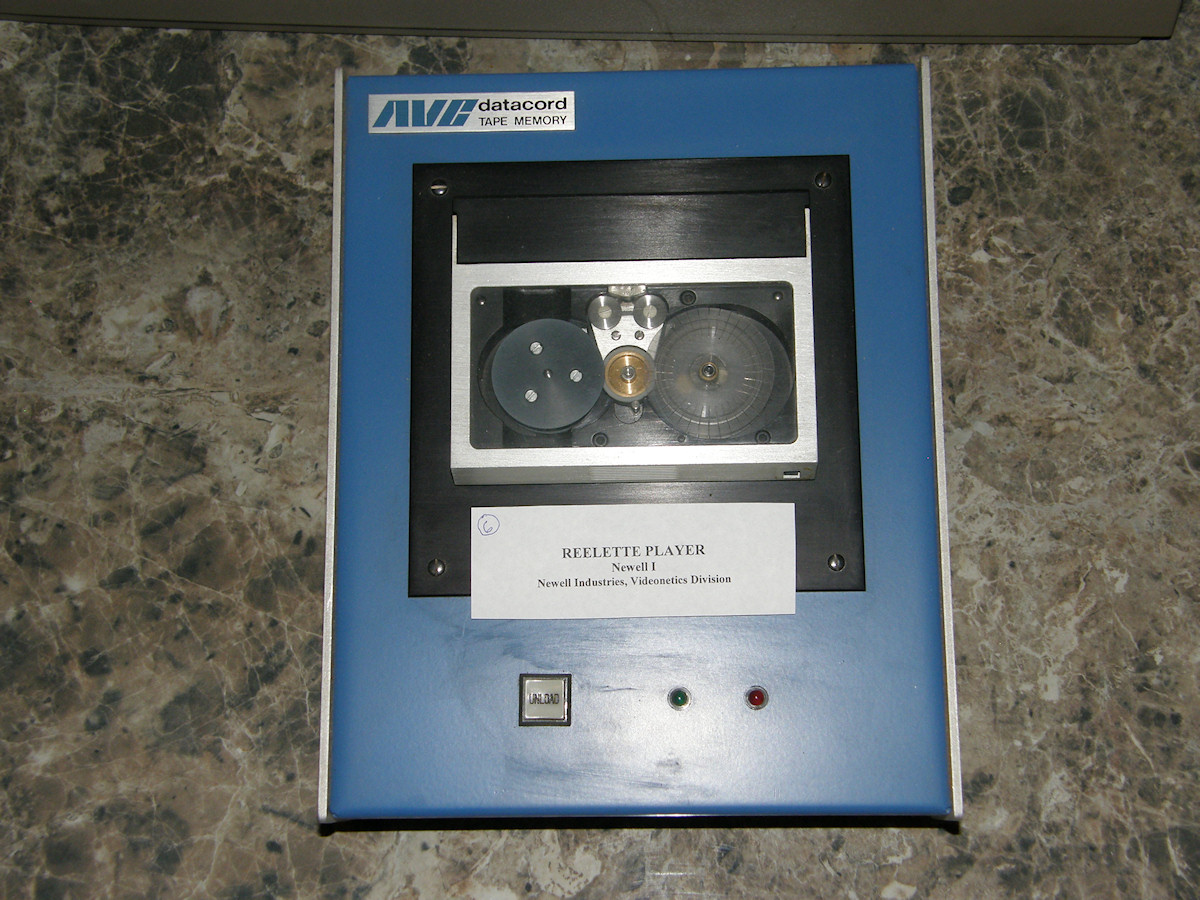
Newell 1, Reelette based computer backup tape prototype. 1970s? - 20150526 This unit may have been intended for the microcomputer market as it existed in the 1970s. Newell's literature is reel big on bragging up the character write abilities of this format. In other words, if the user was typing on a terminal and capturing to tape, each keystroke would cause the tape to jog just far enough to write one byte. Or it could stream data and ridiculously high rates (for the time period). This unit appears to have a huge proprietary 50 pin interface connector, like found on office telephones of that age. This was made by the Datacord division of Newell Industries. 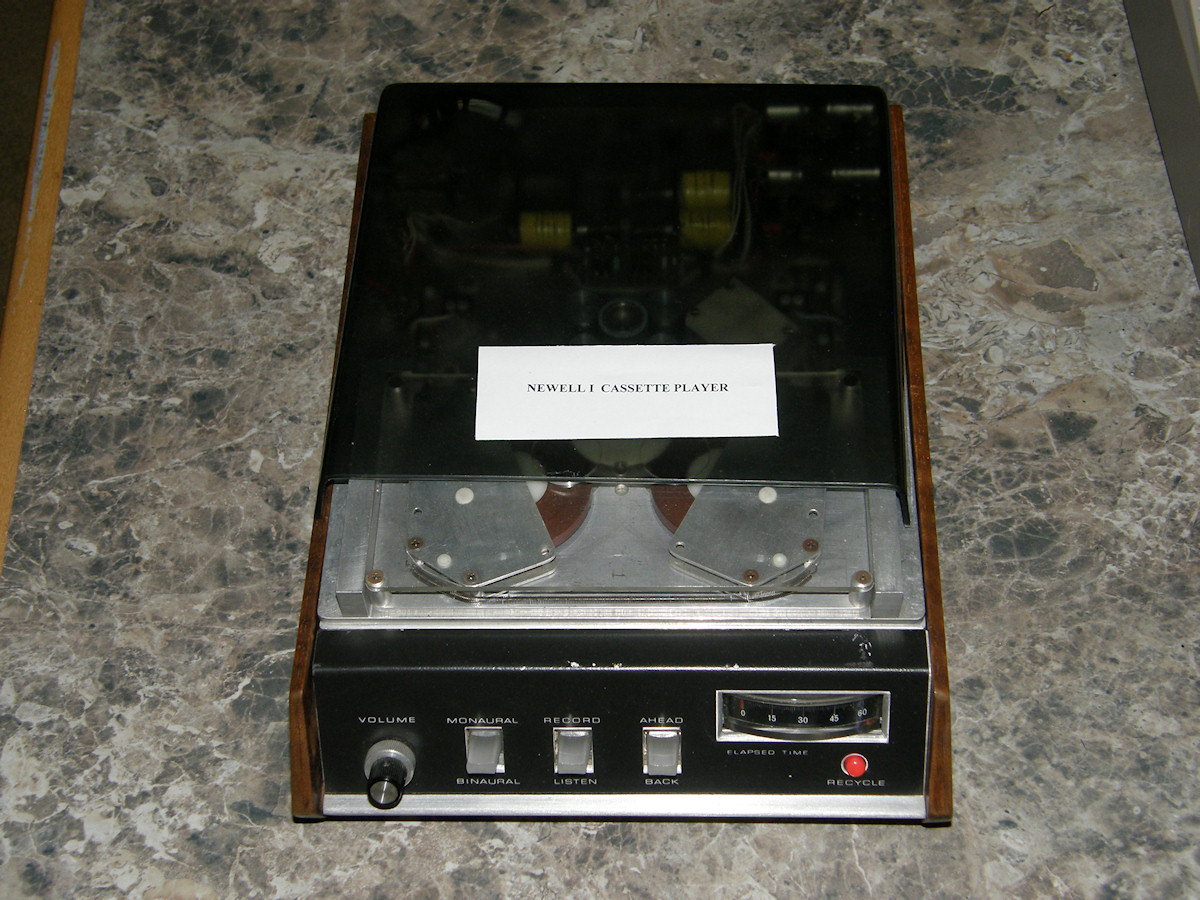
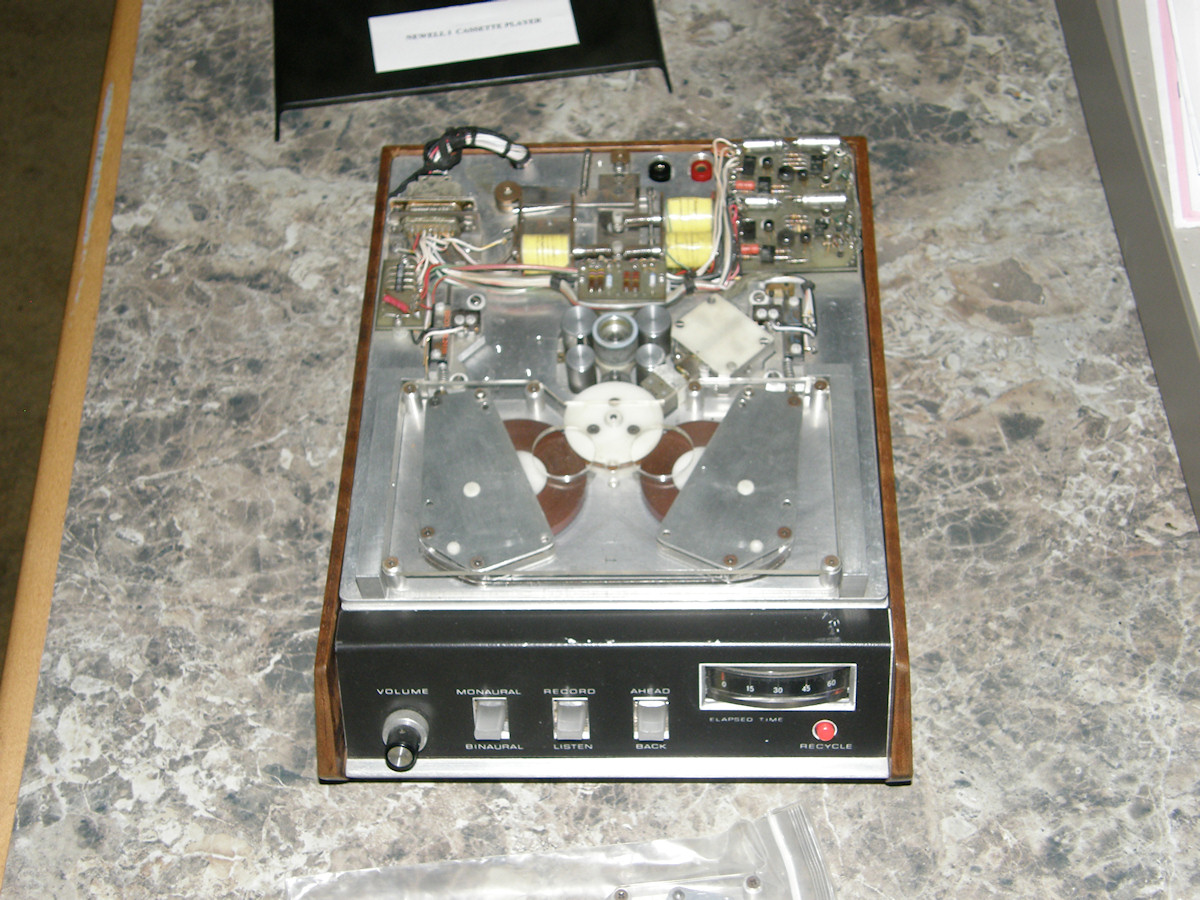
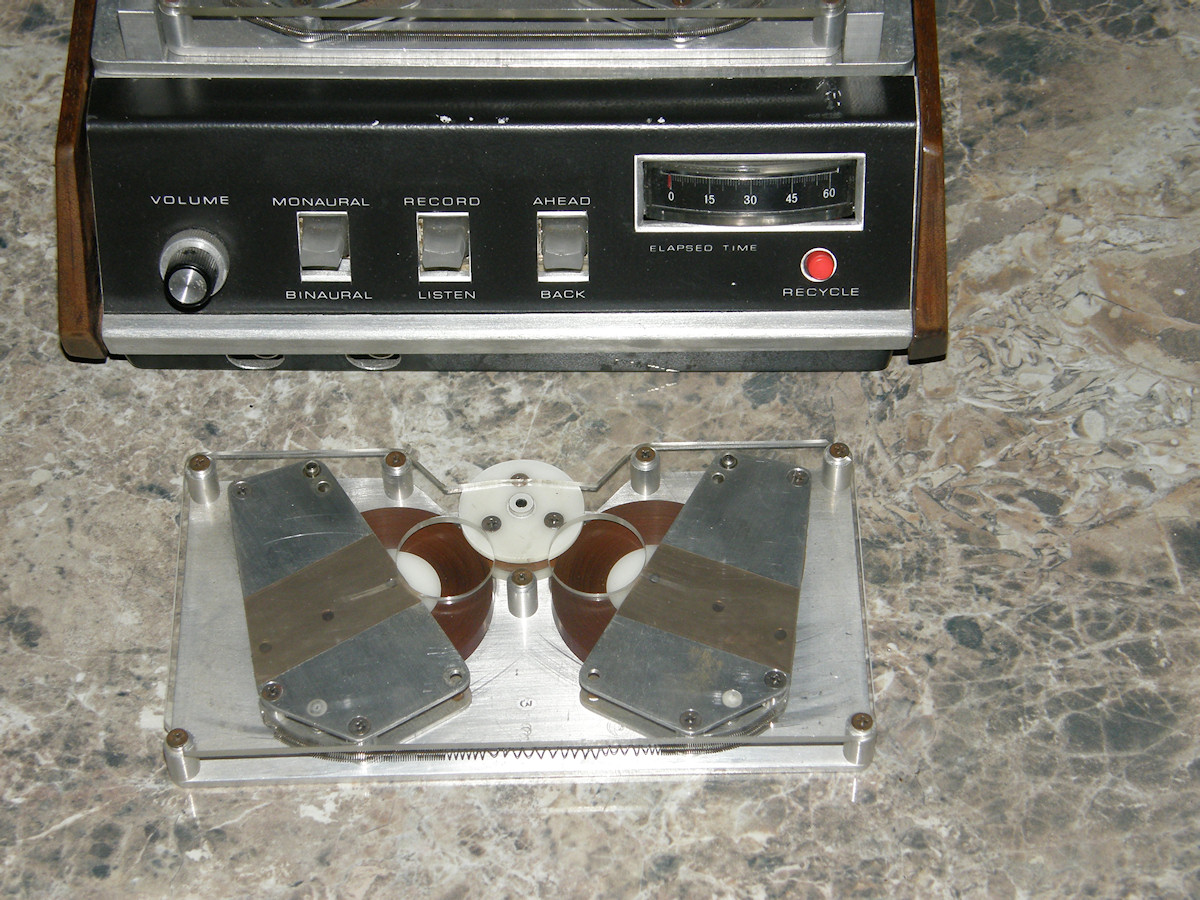
Newell 1, Cassette Tape Recorder prototype. 1970s? - 20150526 This appears to be a (once upon a time) operational unit. Note the Newell 1 configuration with the capstan roller between the tape packs. 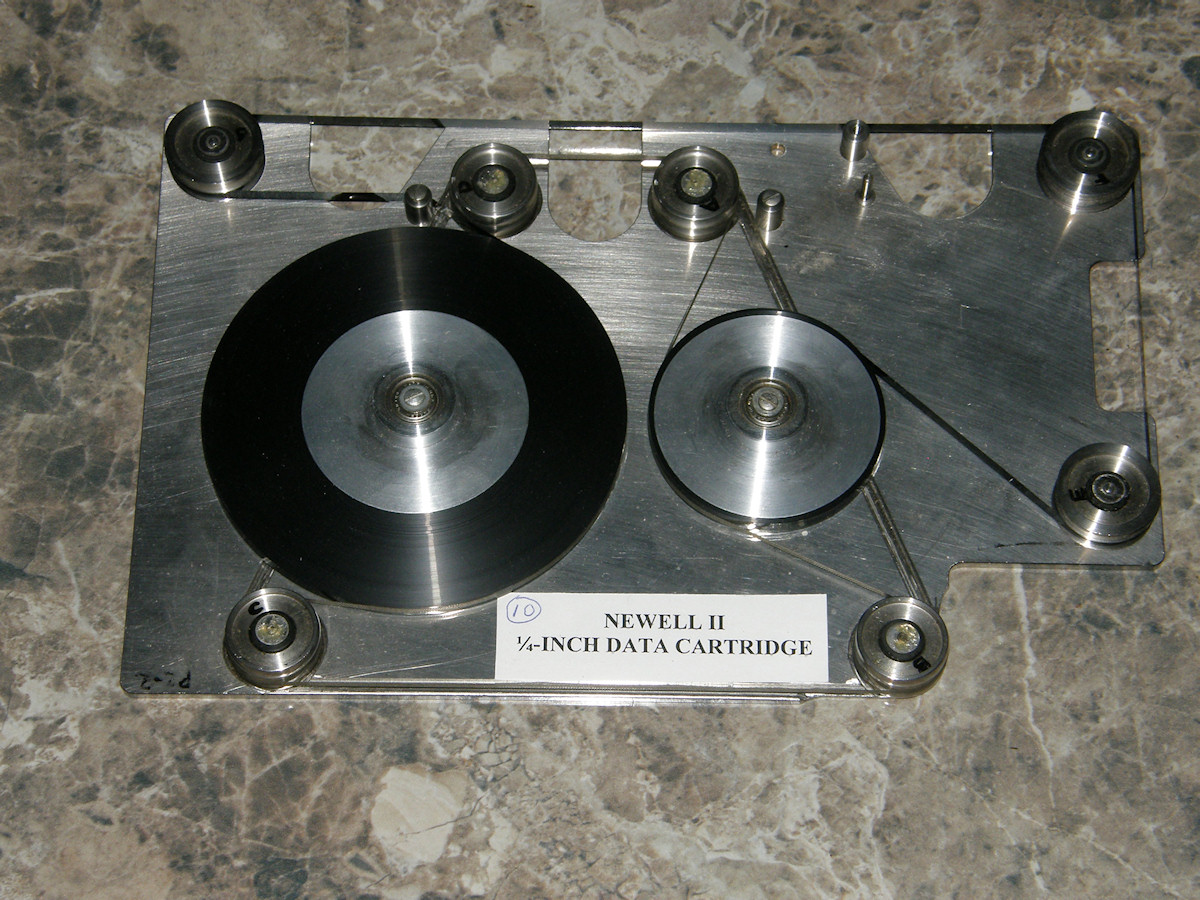
Newell 2, computer backup tape prototype. 1970s? - 20150526 This is a more finalized form of the quartr inch tape back up cartridges. Newell's cartridge company was called Cartrex. 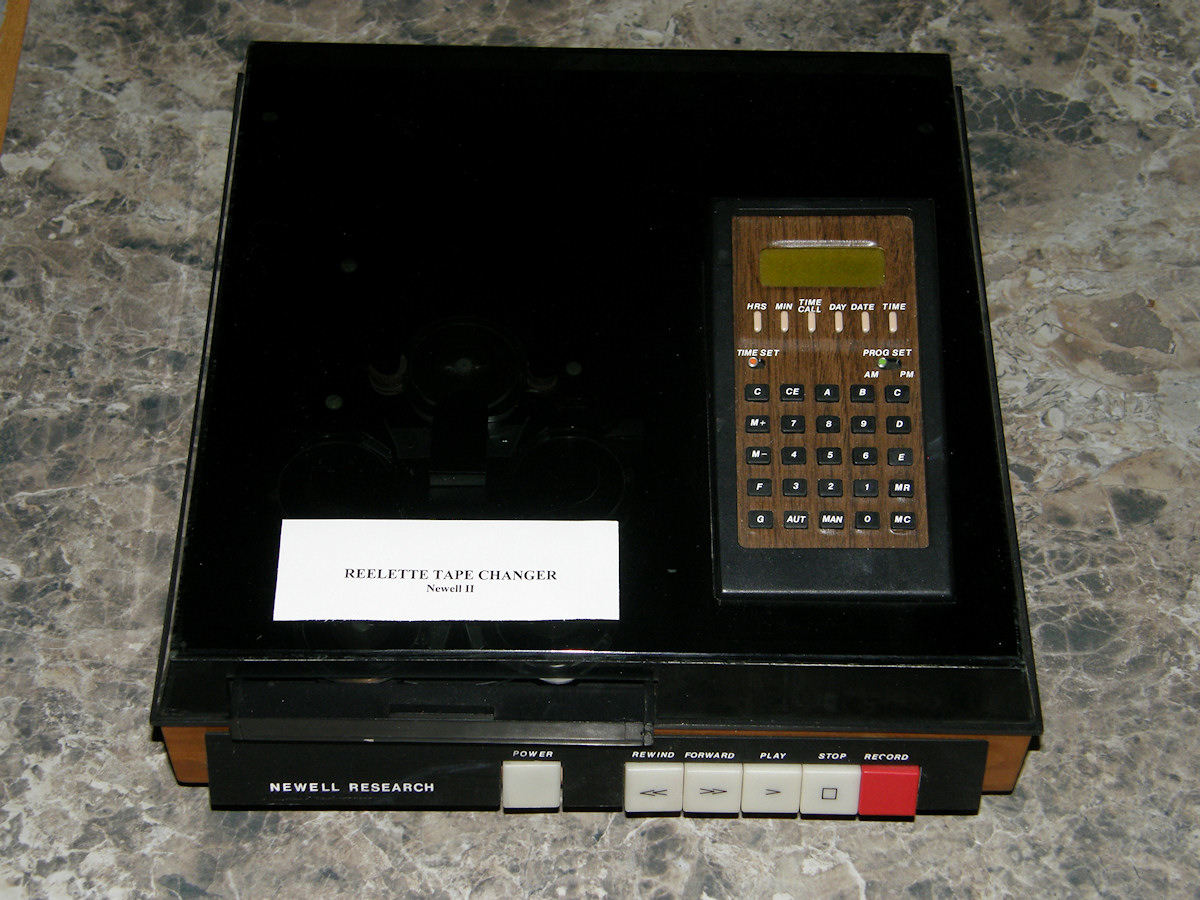
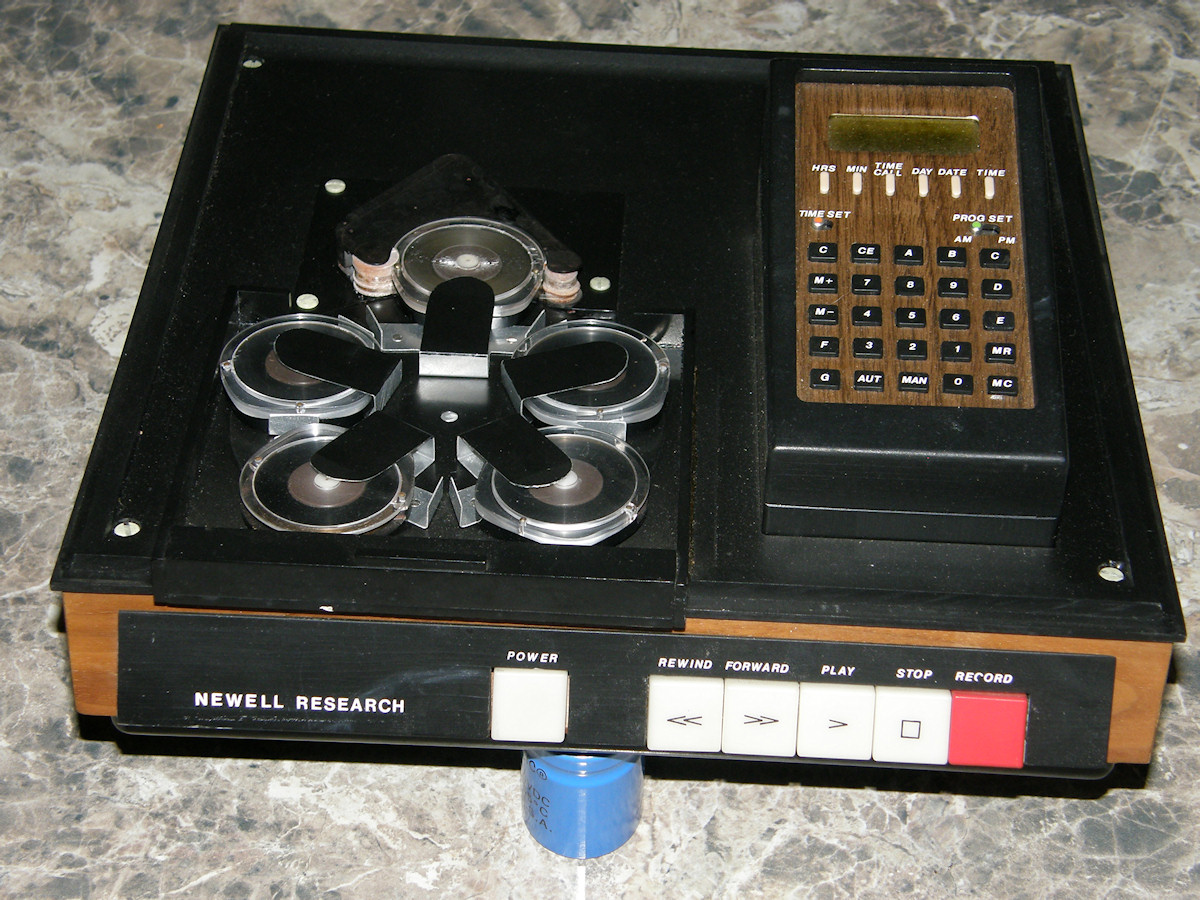
Newell 1, Reelette Tape changer mock up. 1970s? - 20150526 This is only a model that does not operate. The buttons are just glued to the panel for instance. Very gnarly looking and most 1970s looking in all aspects. Add a keypad to something in the 70s and it became the iPad of its day! 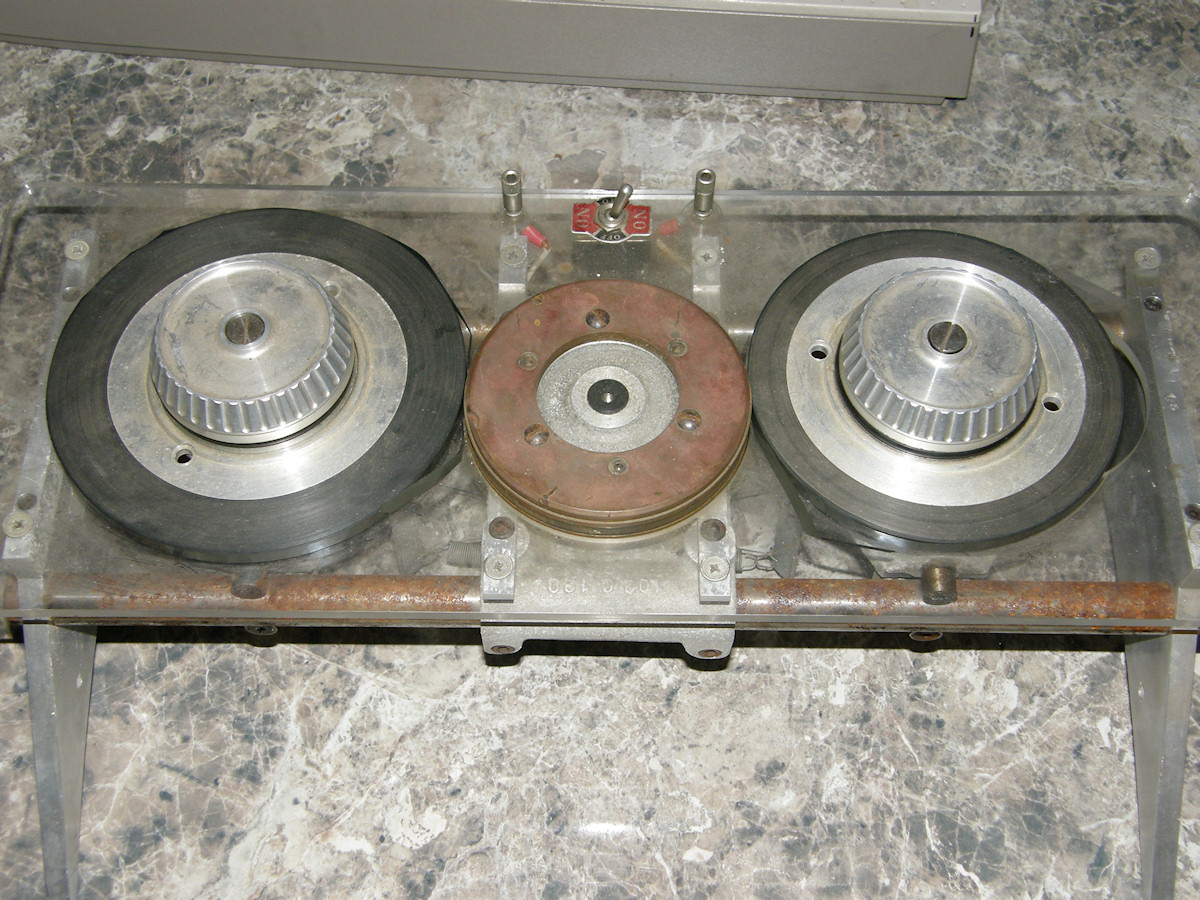
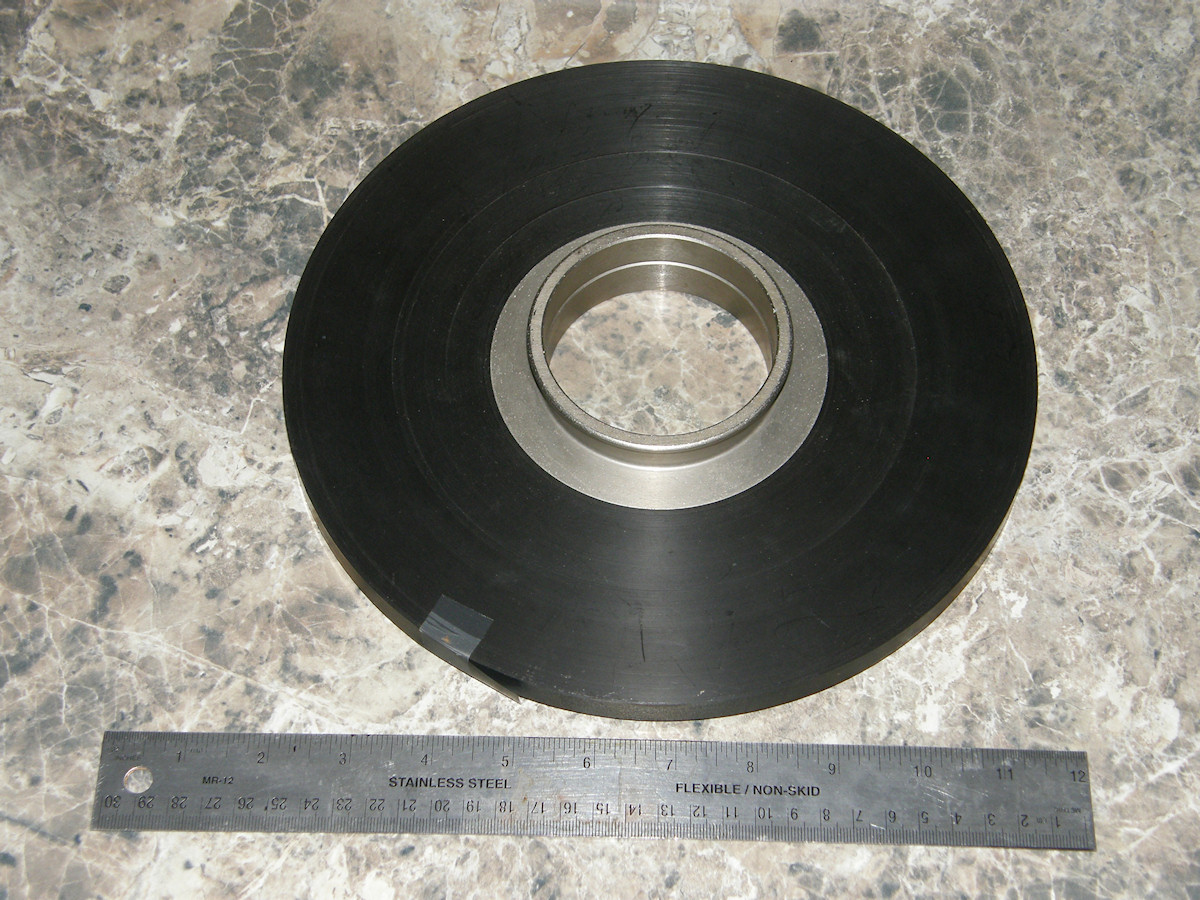
Newell 1, half inch tape prototype. 1970s? - 20150526 I must imagine that this was a test bed for measuring the dynamices of tape handling with this system. Later Newell half inch drives were used as video tape recorders and as very high speed instrumentation recorders. One of the most common uses was for high speed data dump capturing for satellites that passed over only occasionally. This is the only item of the lot that I will consider experimenting with. Obviously, it needs some serious cleaning and overhauling. But, if it is what I think it is, I should be able to record and play video from it. Bad video probably. But, that is a ways down the pike for now. Stay tuned! As time permits, I will document and display more of these wonderful gems right here. So, be sure to check back occasionally to see waht's new. [HOME] [VTR PEOPLE] Created: May 26, 2015 Last updated: June 11, 2015 |